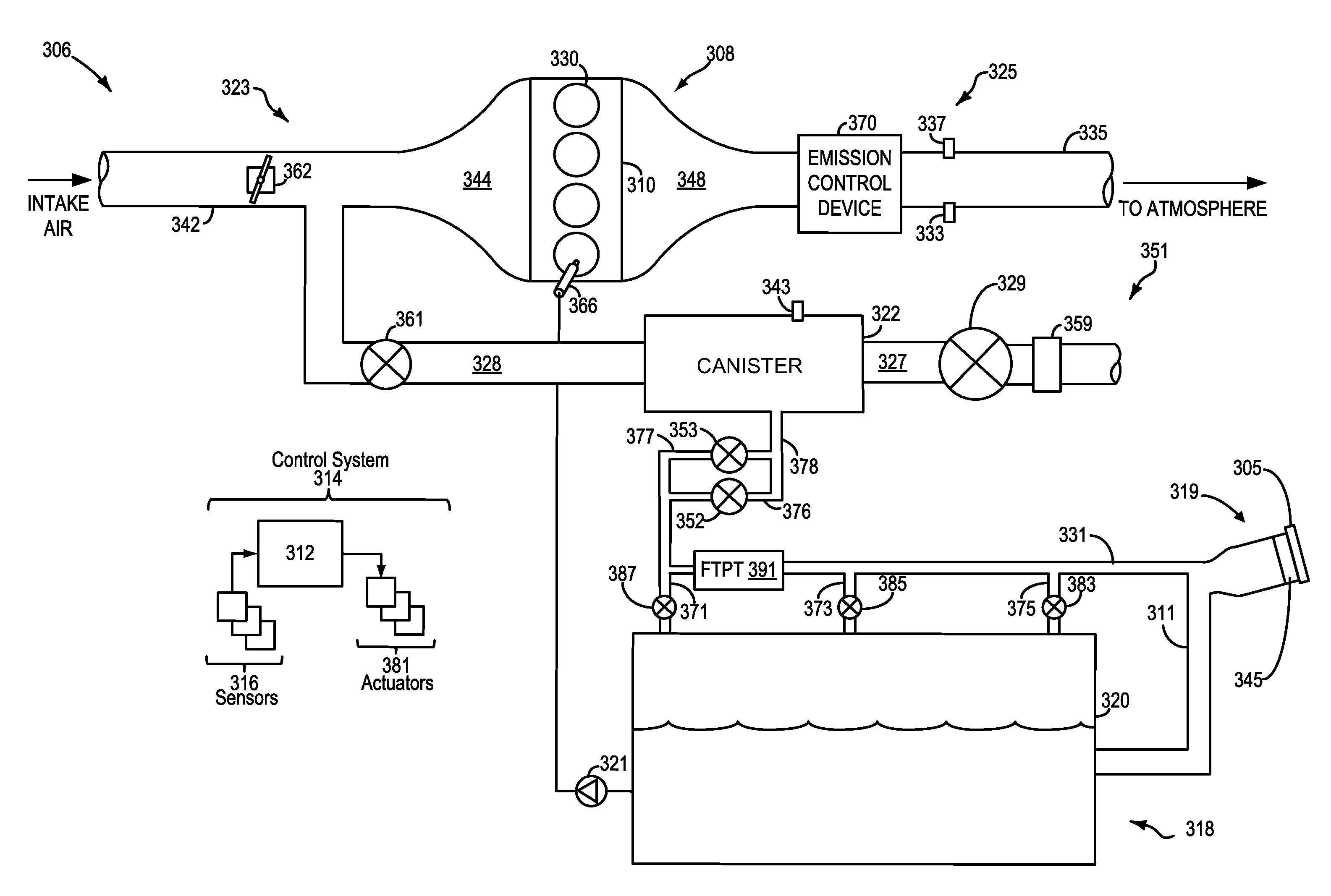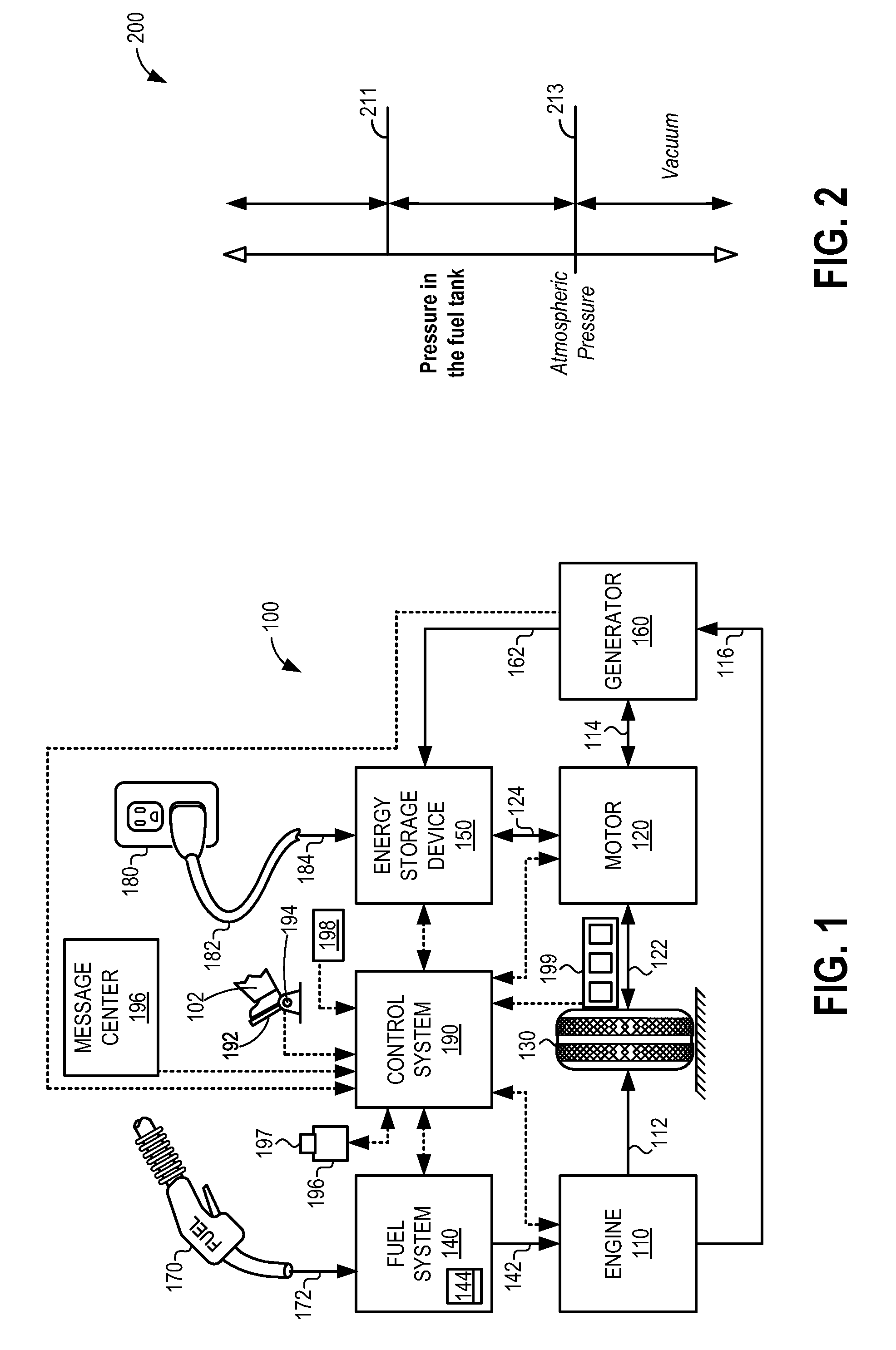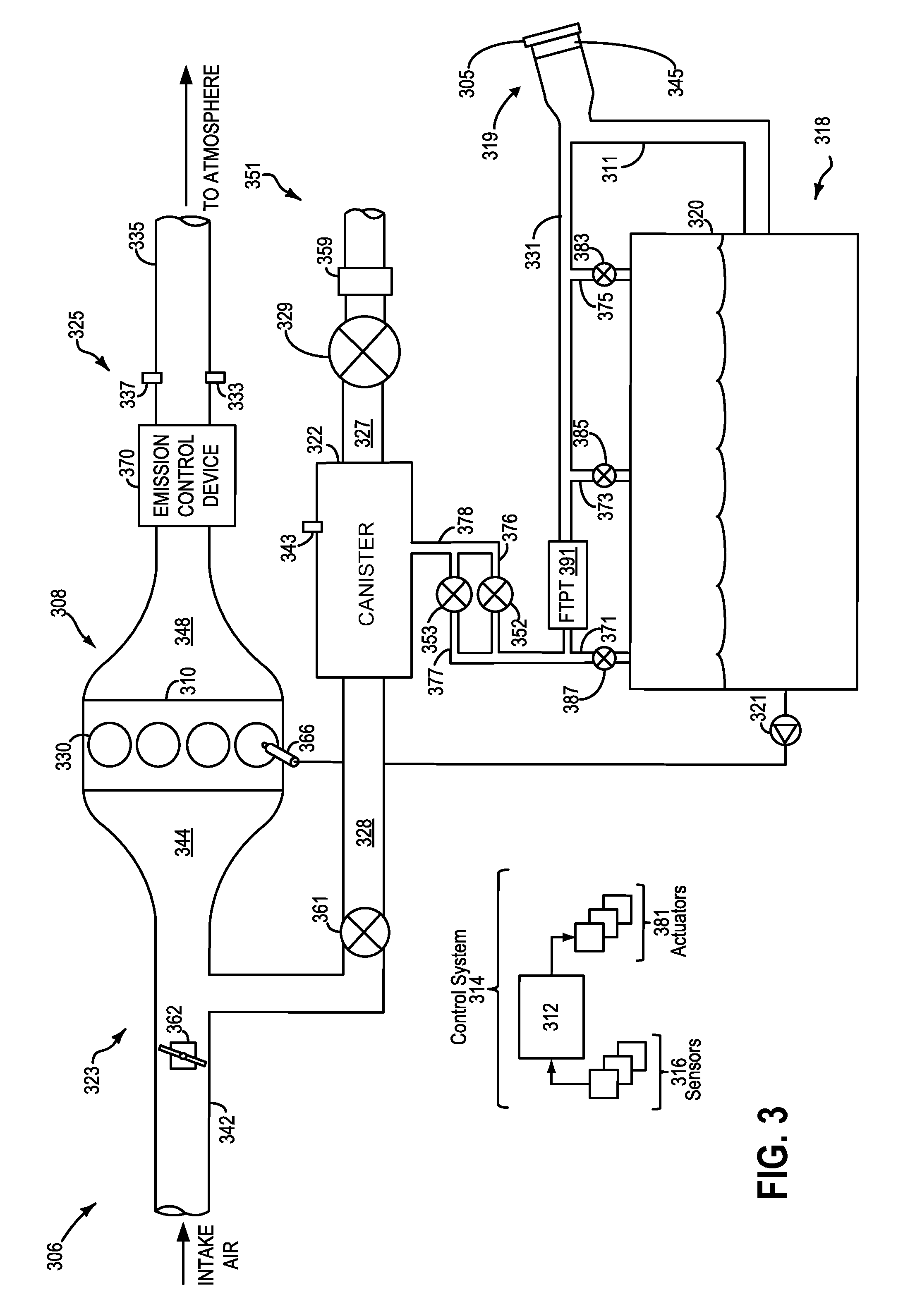Systems and methods for refueling canister system
a canister system and canister technology, applied in the direction of machines/engines, mechanical equipment, transportation and packaging, etc., can solve the problem of limited amount of bleeding, and achieve the effect of reducing the release of fuel vapors
- Summary
- Abstract
- Description
- Claims
- Application Information
AI Technical Summary
Benefits of technology
Problems solved by technology
Method used
Image
Examples
Embodiment Construction
[0019]The following description relates to systems and methods for depressurizing a fuel tank from either positive or negative pressures prior to a refueling event. The fuel tank may be included in a vehicle, such as a hybrid electric vehicle, as shown in FIG. 1. The vehicle may include a fuel system and an evaporative emissions system, as shown in FIG. 3. The fuel system may be coupled to the evaporative emissions system via a tank pressure valve and a refueling valve, the two valves in parallel, as shown by FIG. 3. Pressure within the fuel tank may be higher than a first predetermined threshold, between a first predetermined threshold and a second predetermined threshold (or atmospheric pressure), or lower than a second predetermined threshold (or atmospheric pressure) as shown in FIG. 2. A refueling request may be followed by various depressurization routines (FIG. 4) based on the existing pressure within the tank. The depressurization routines of FIGS. 5, 6, and 7 utilize one or...
PUM
 Login to View More
Login to View More Abstract
Description
Claims
Application Information
 Login to View More
Login to View More - R&D
- Intellectual Property
- Life Sciences
- Materials
- Tech Scout
- Unparalleled Data Quality
- Higher Quality Content
- 60% Fewer Hallucinations
Browse by: Latest US Patents, China's latest patents, Technical Efficacy Thesaurus, Application Domain, Technology Topic, Popular Technical Reports.
© 2025 PatSnap. All rights reserved.Legal|Privacy policy|Modern Slavery Act Transparency Statement|Sitemap|About US| Contact US: help@patsnap.com



